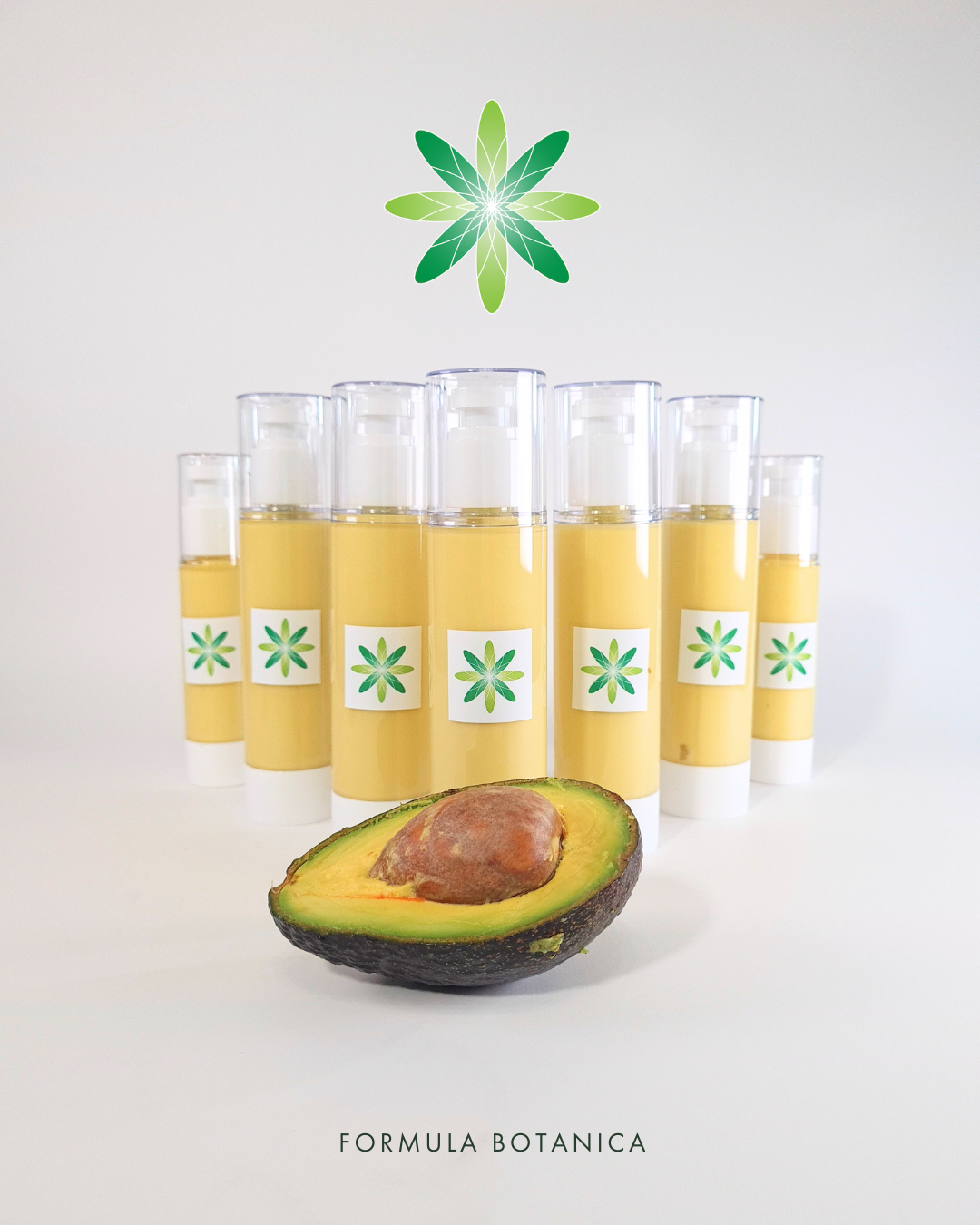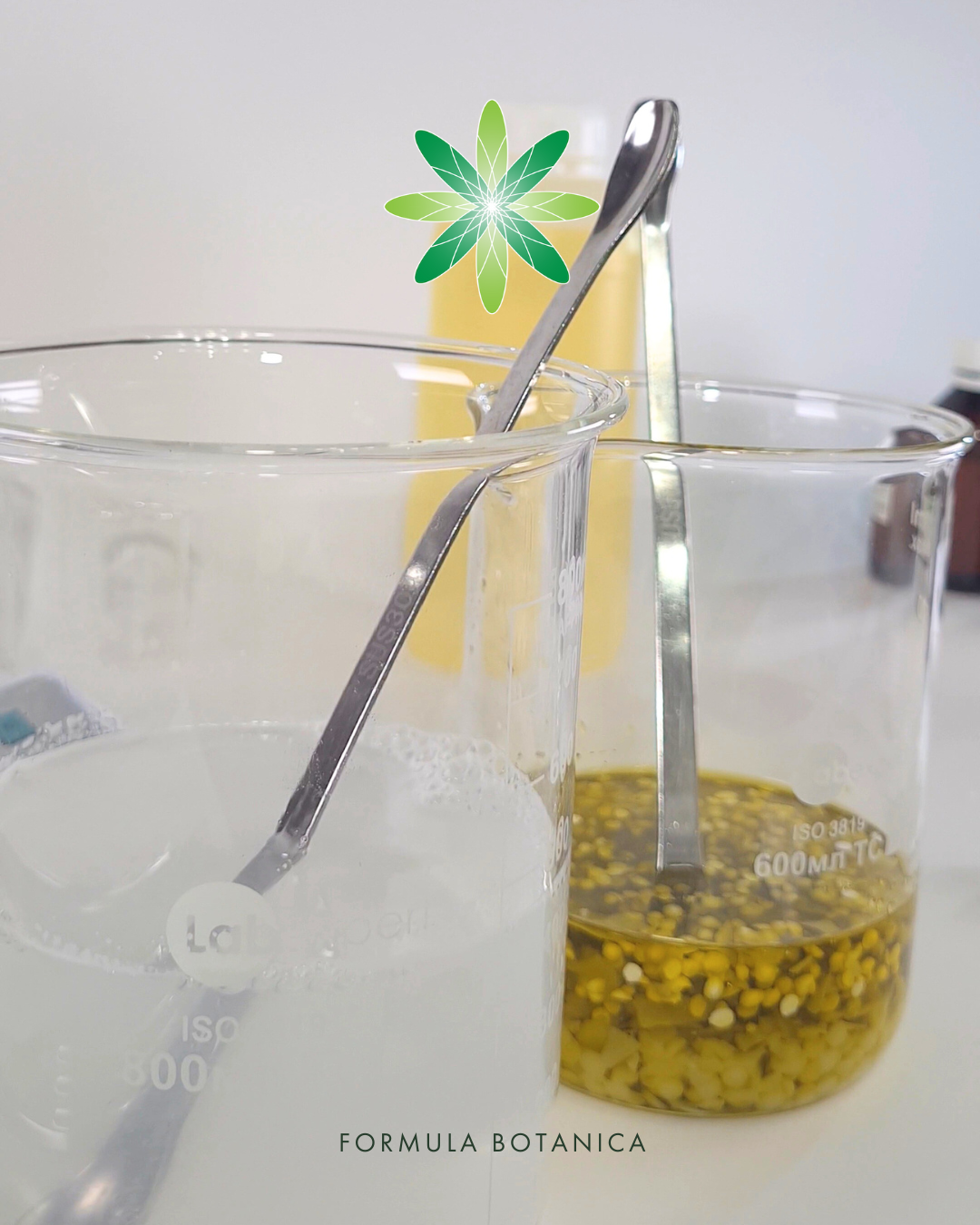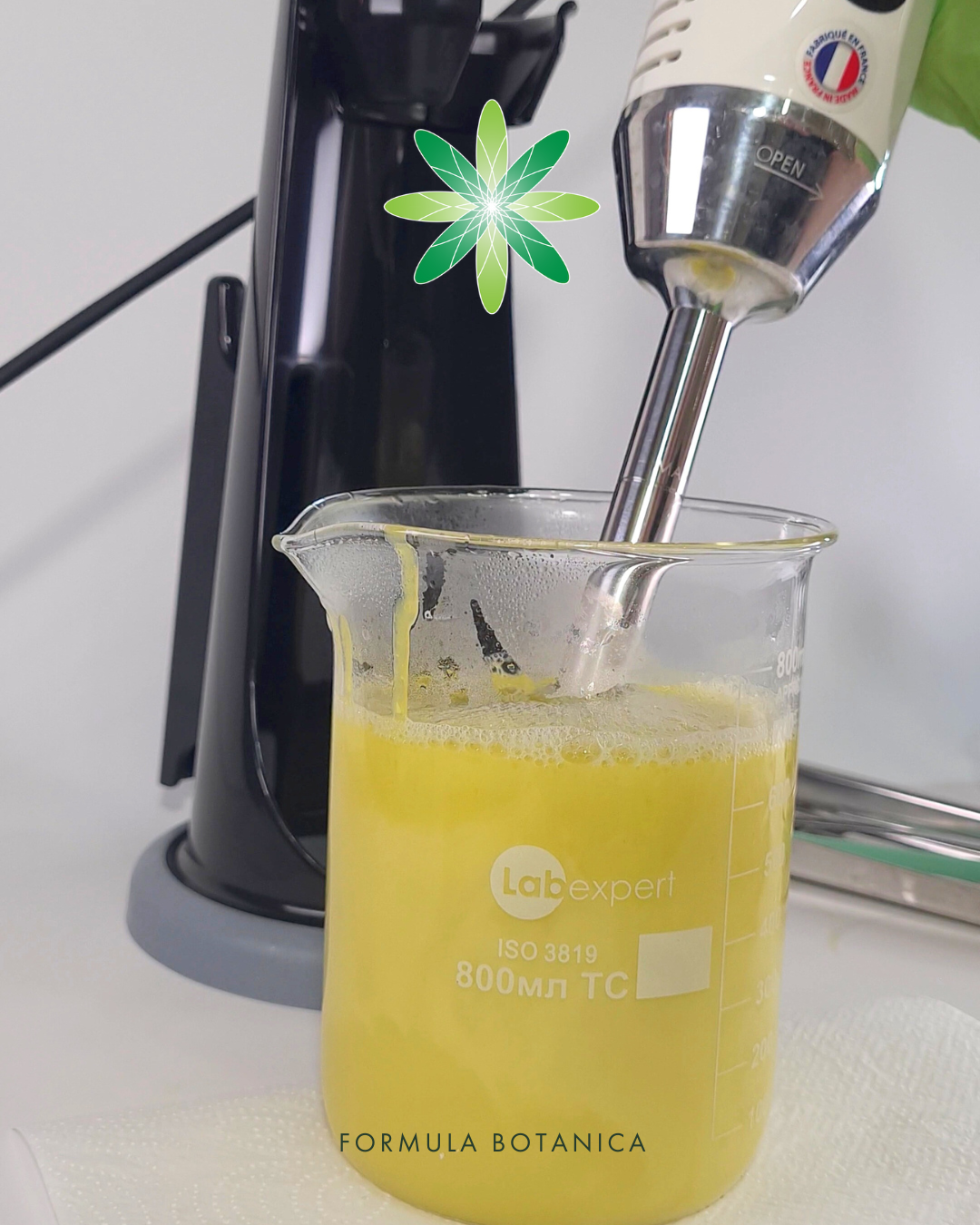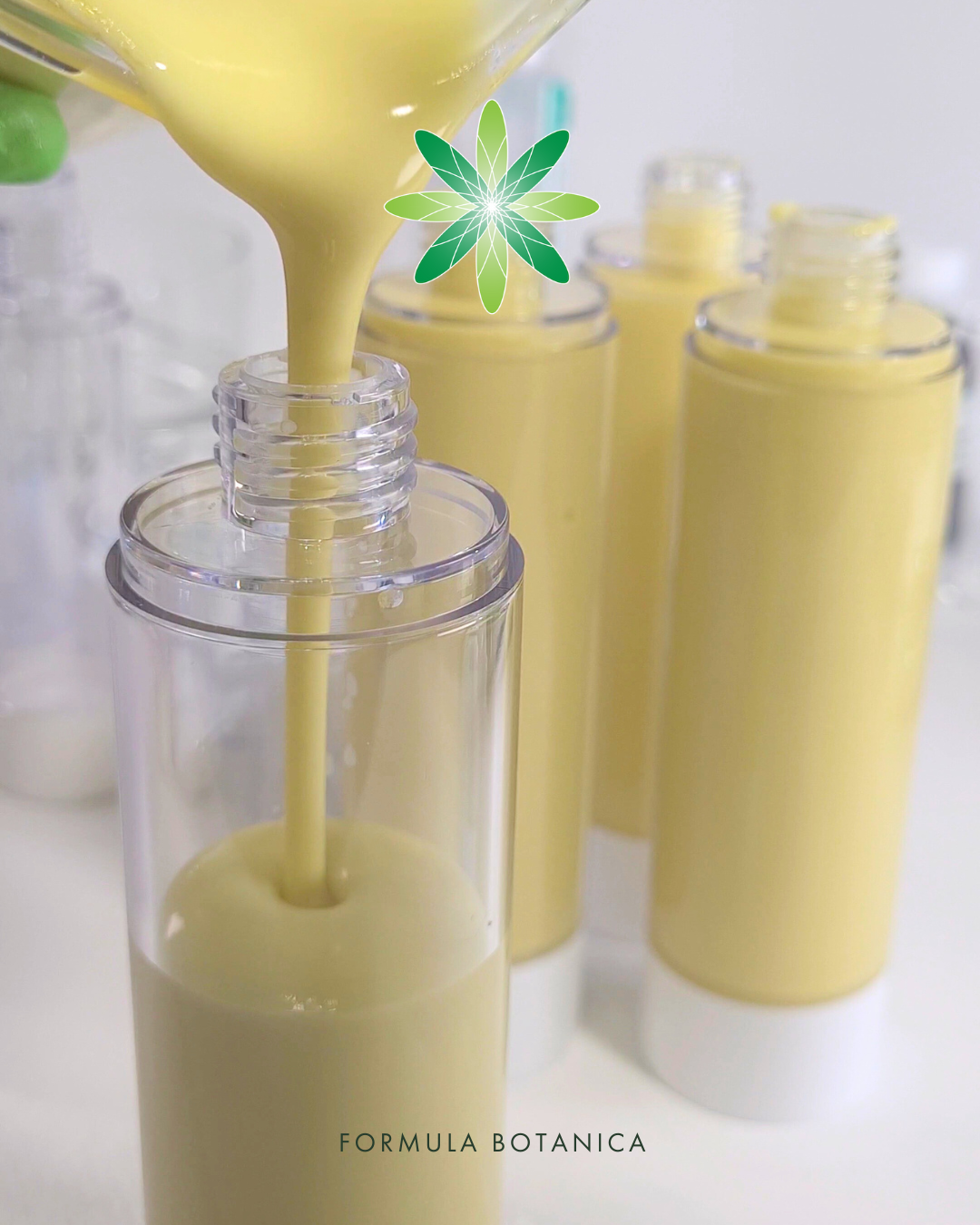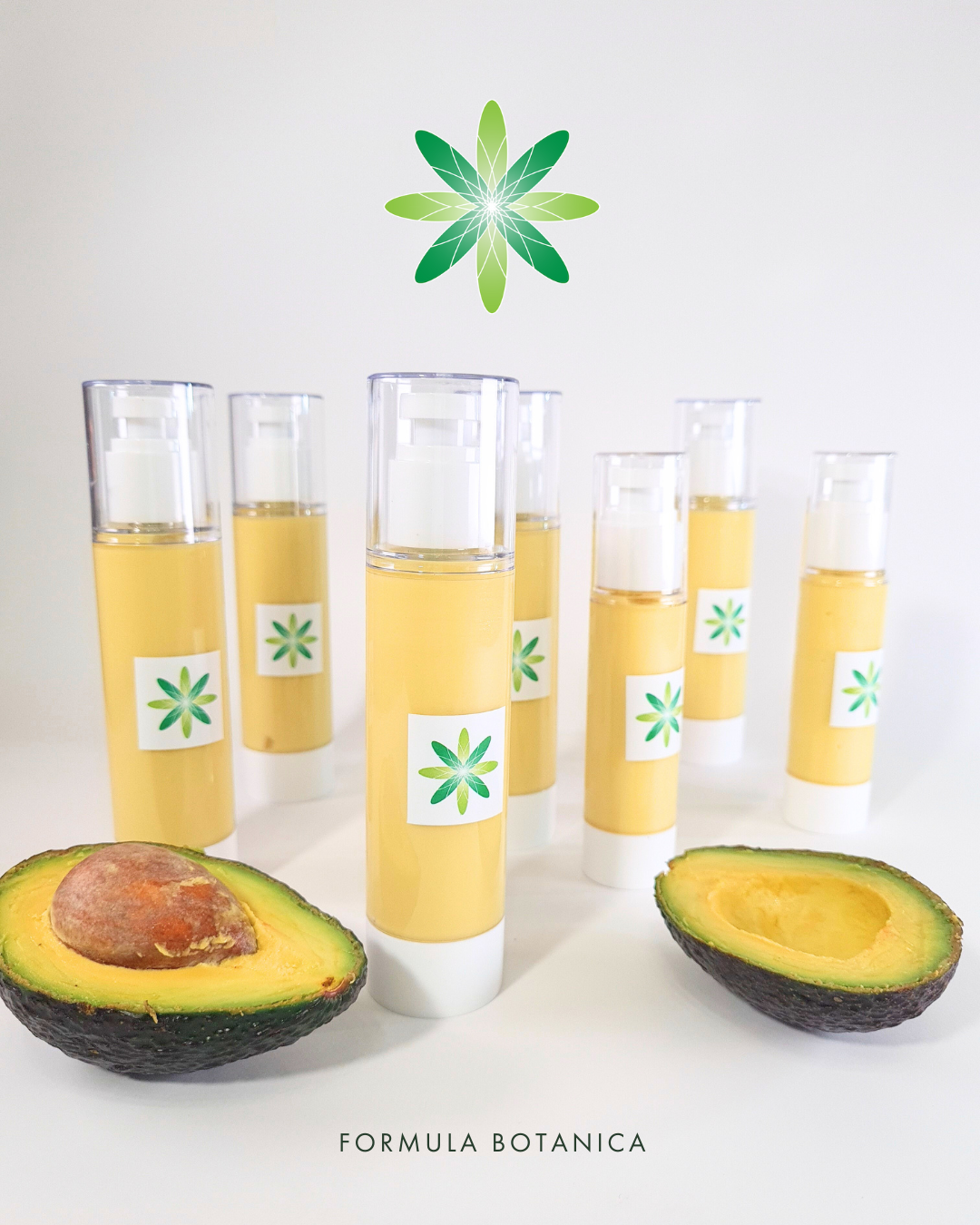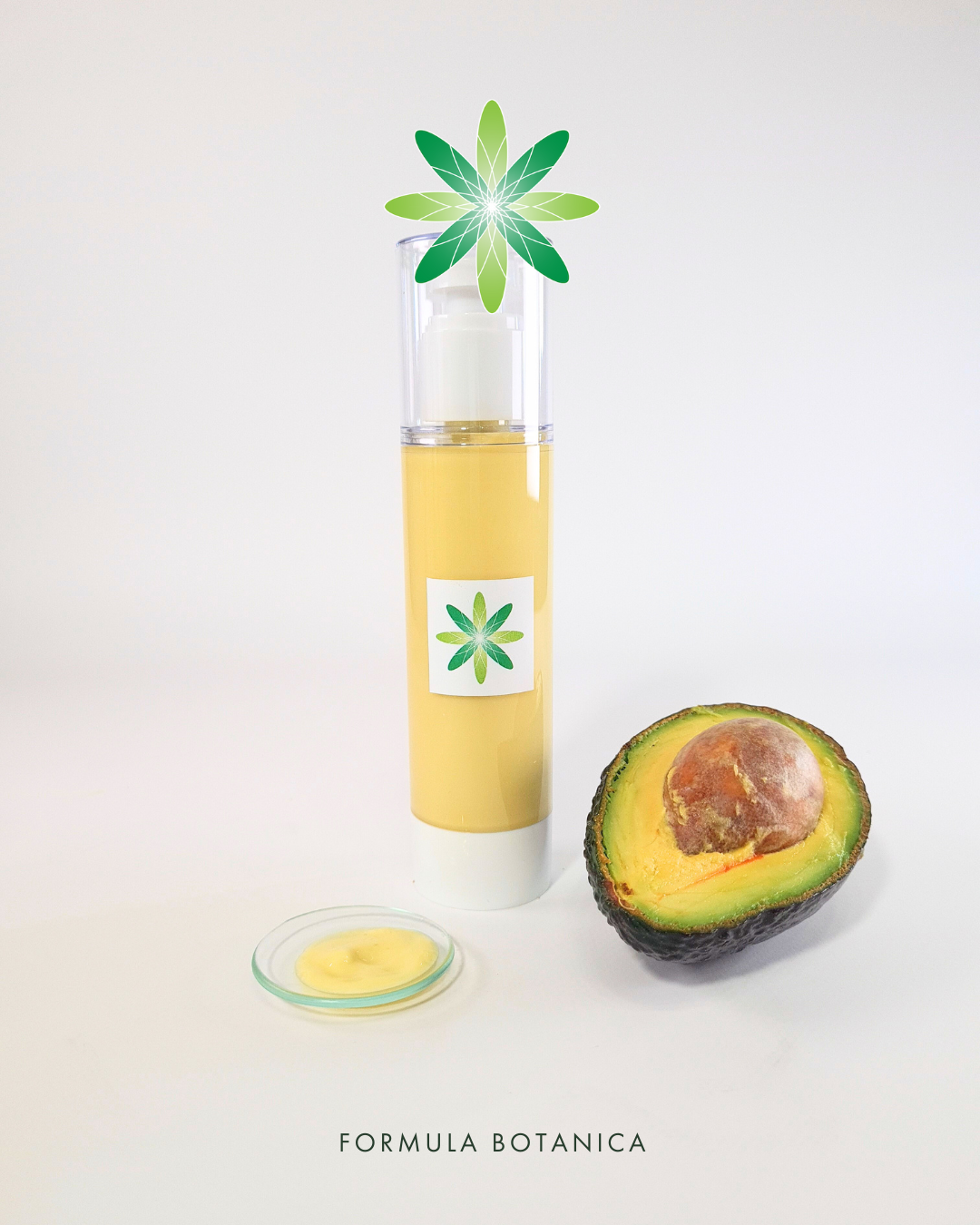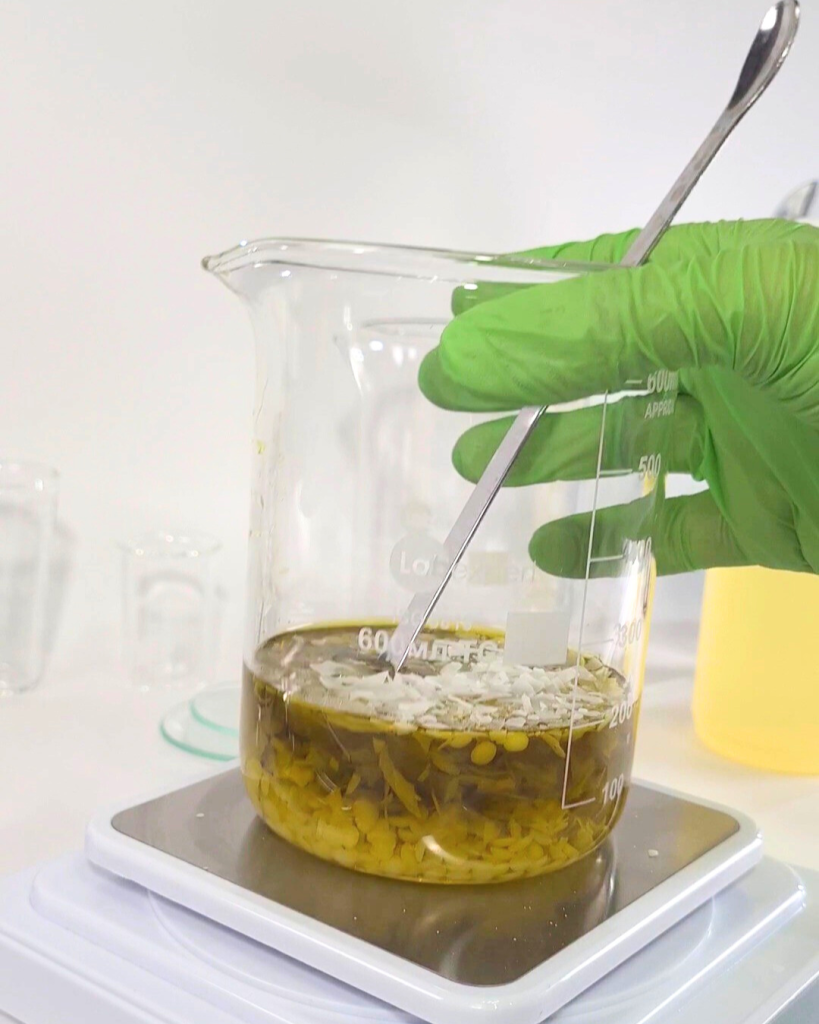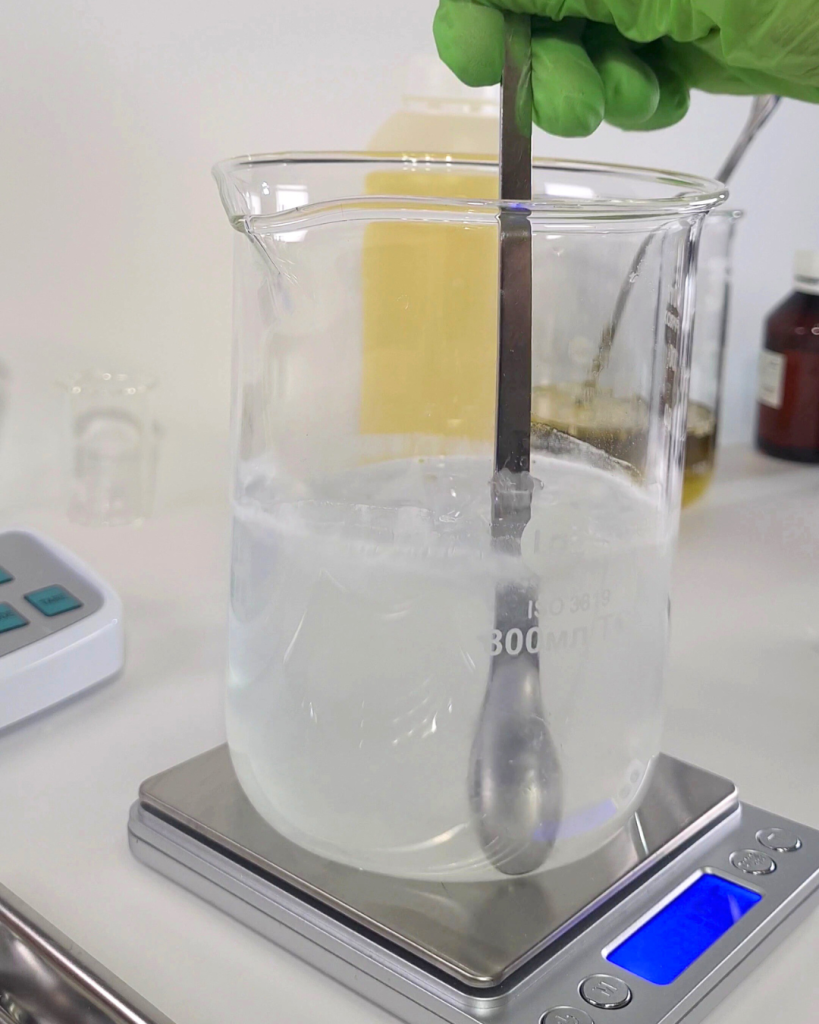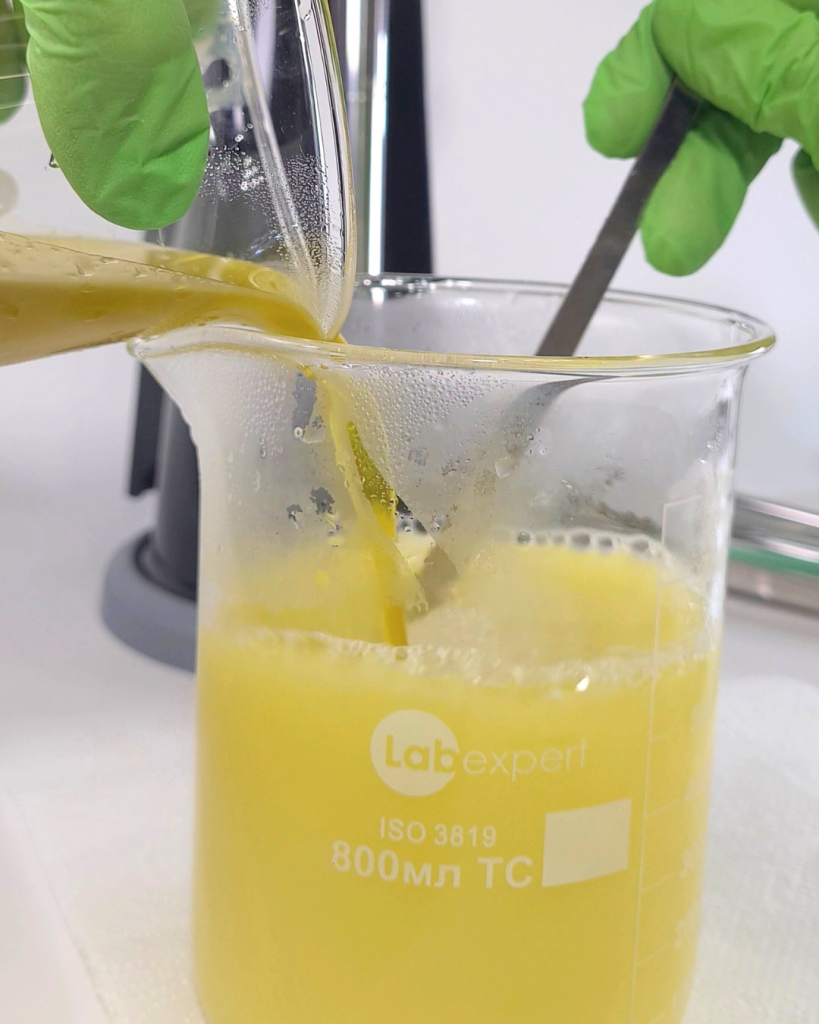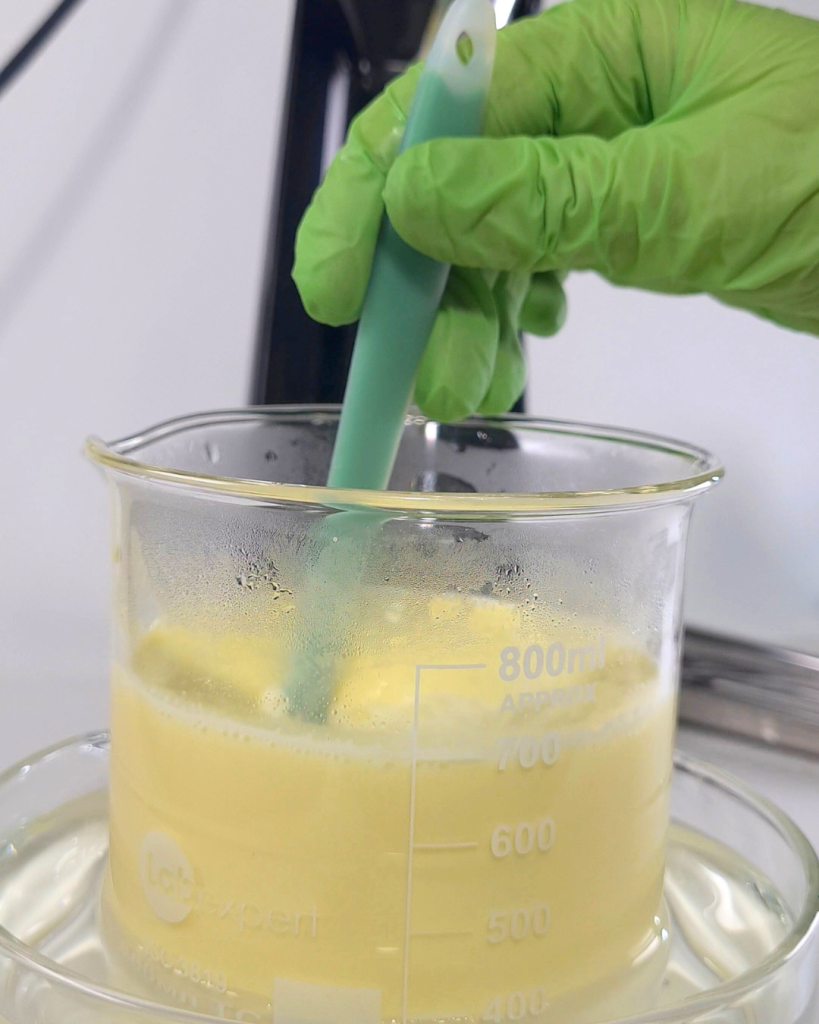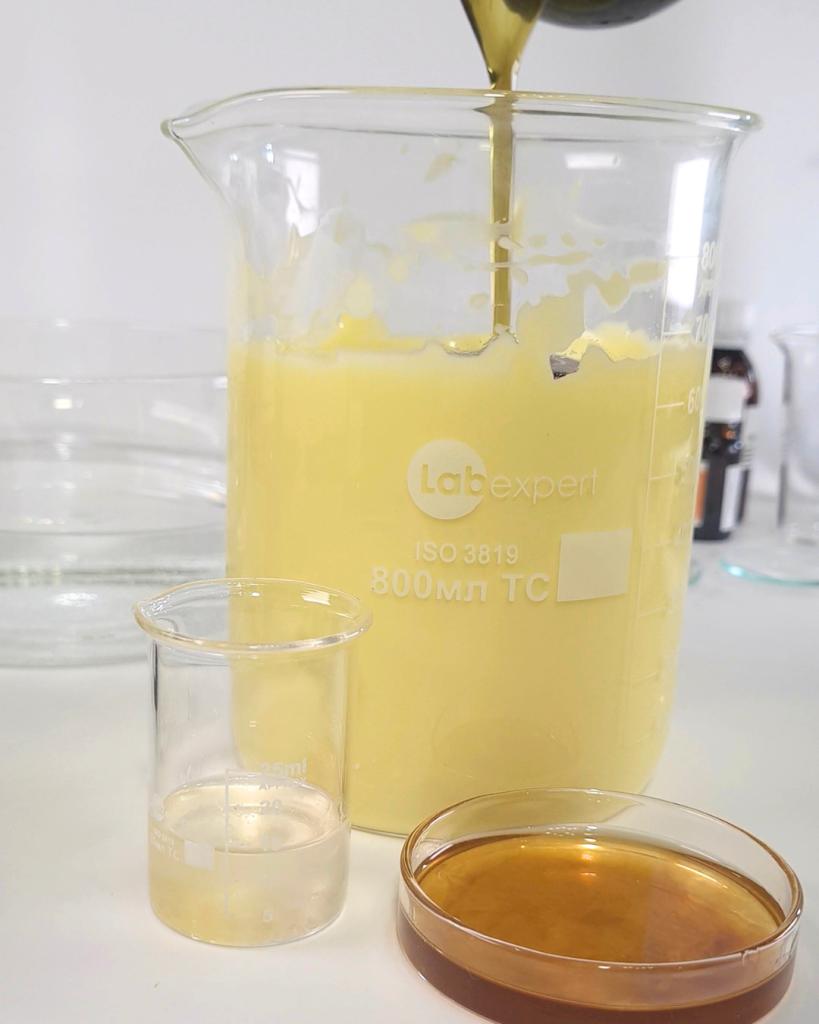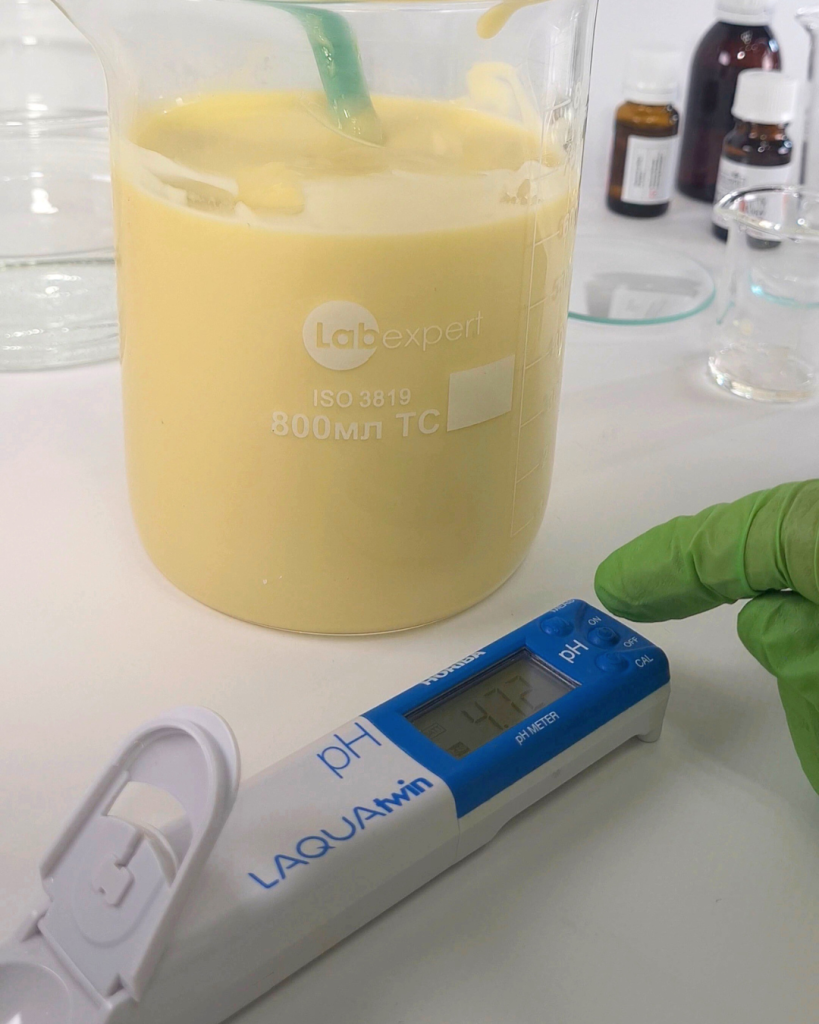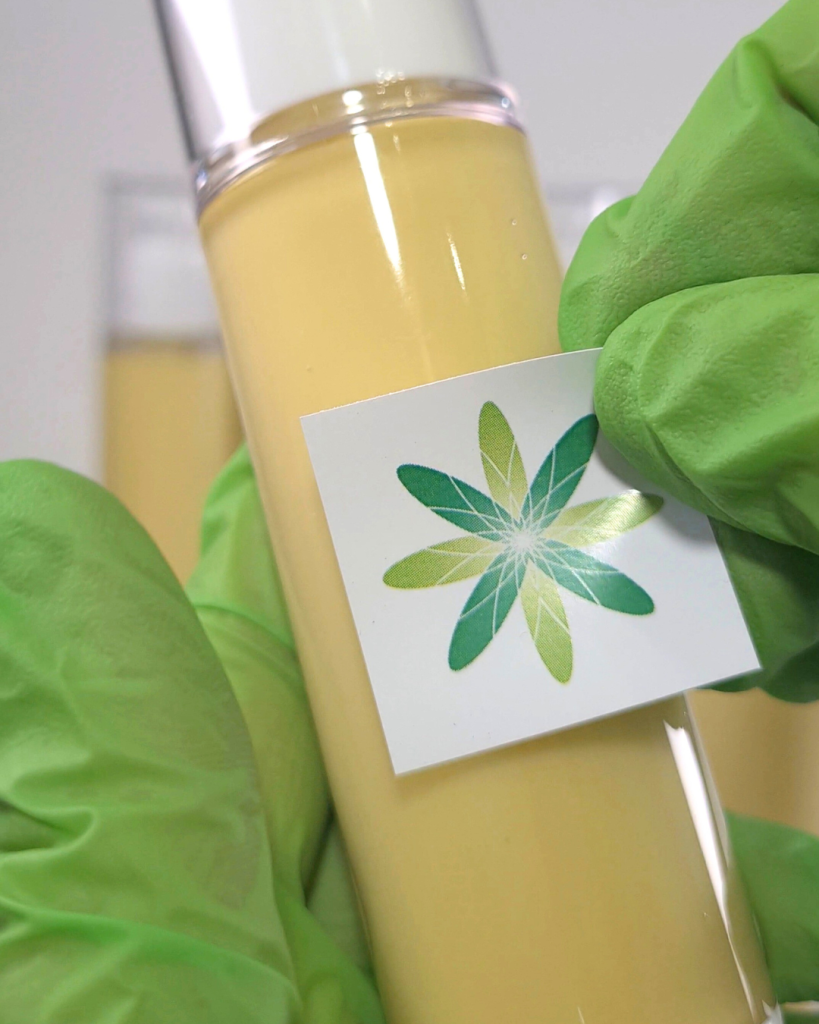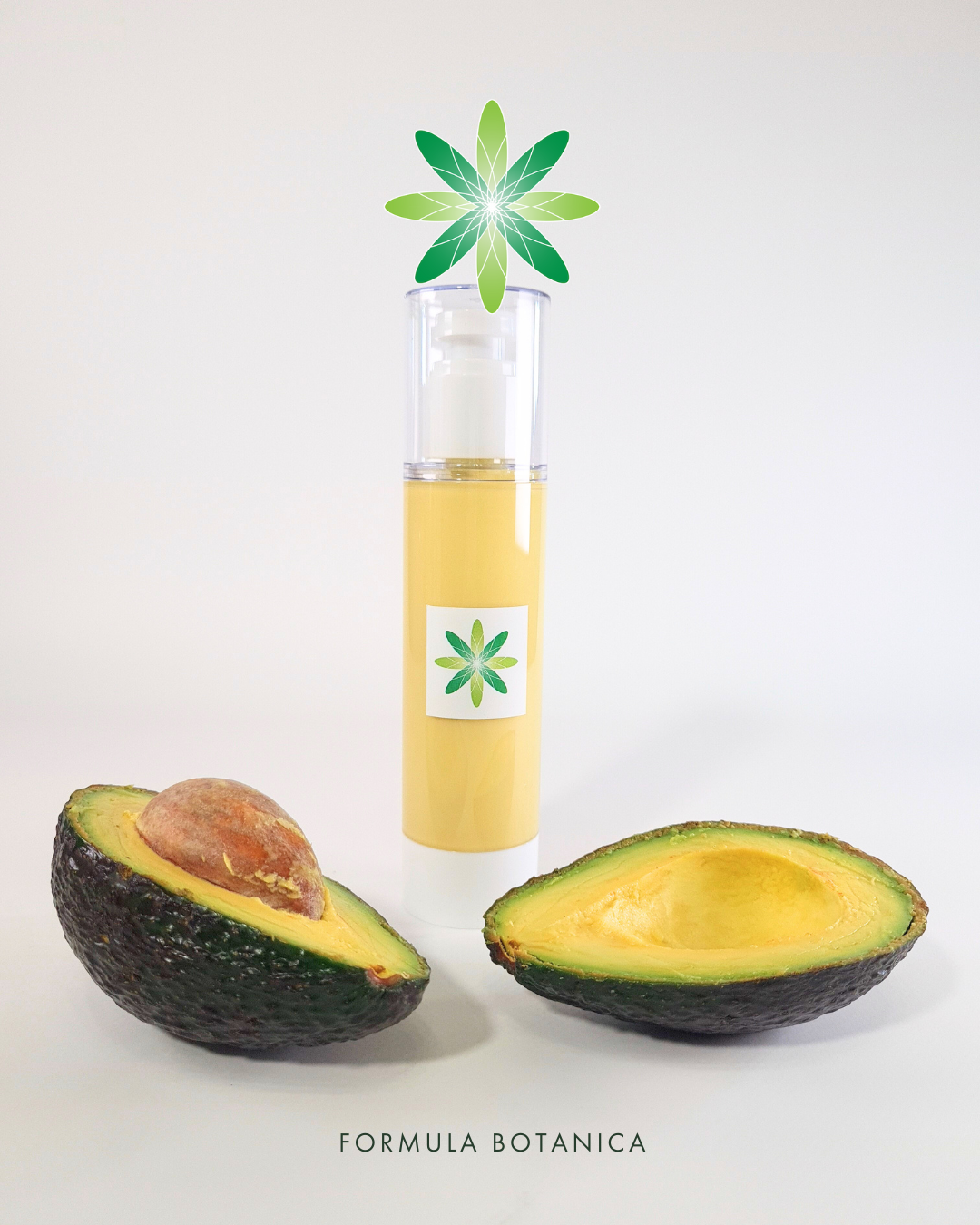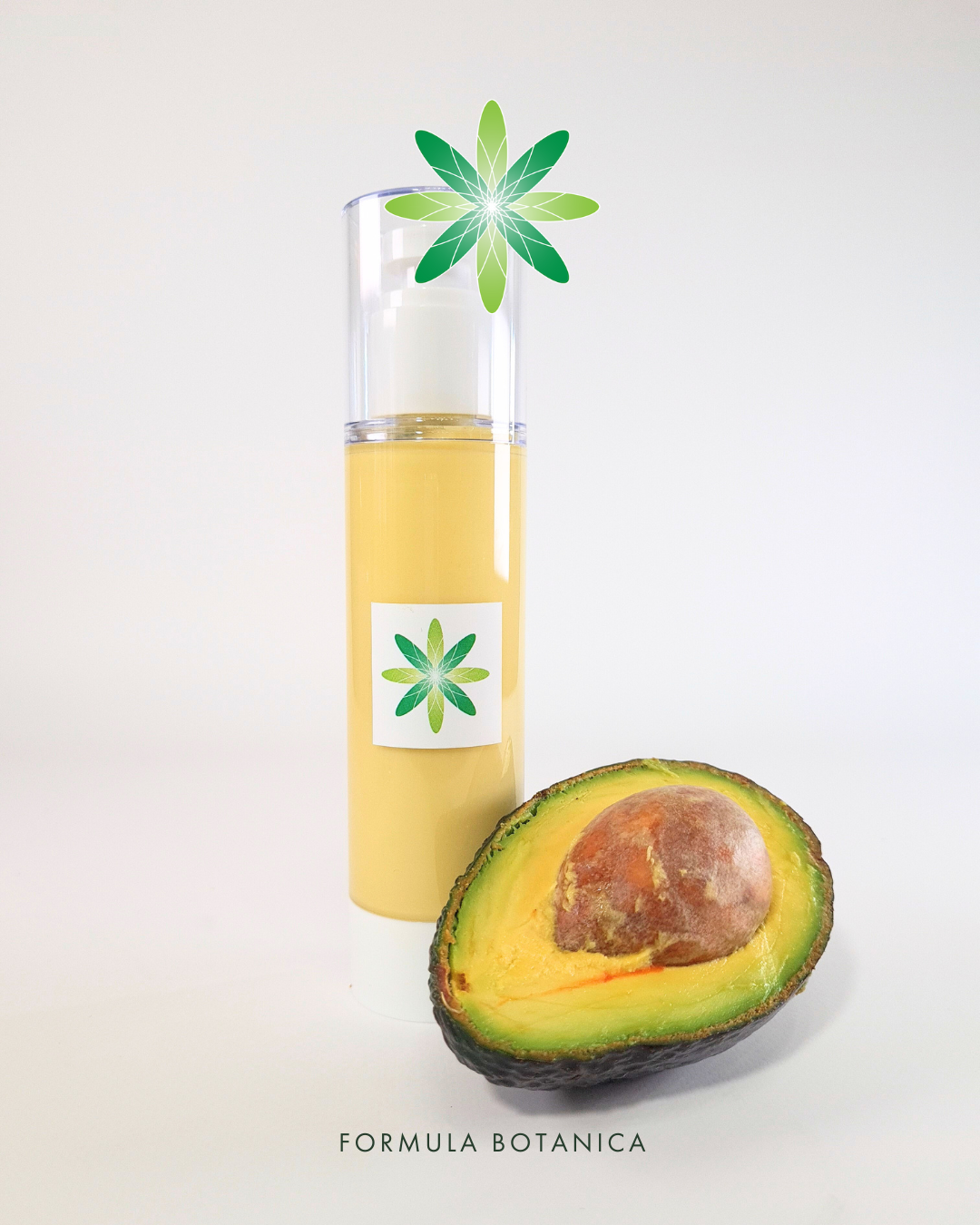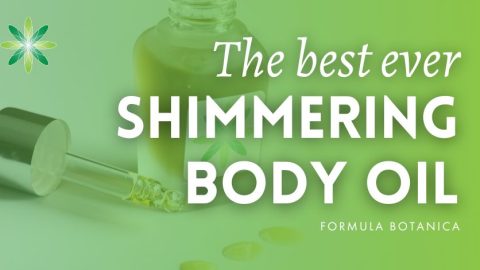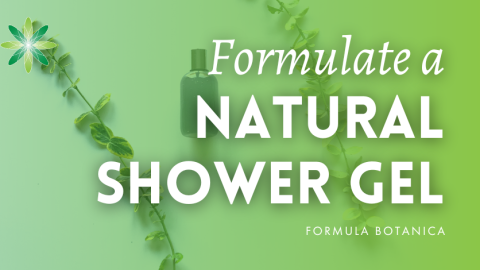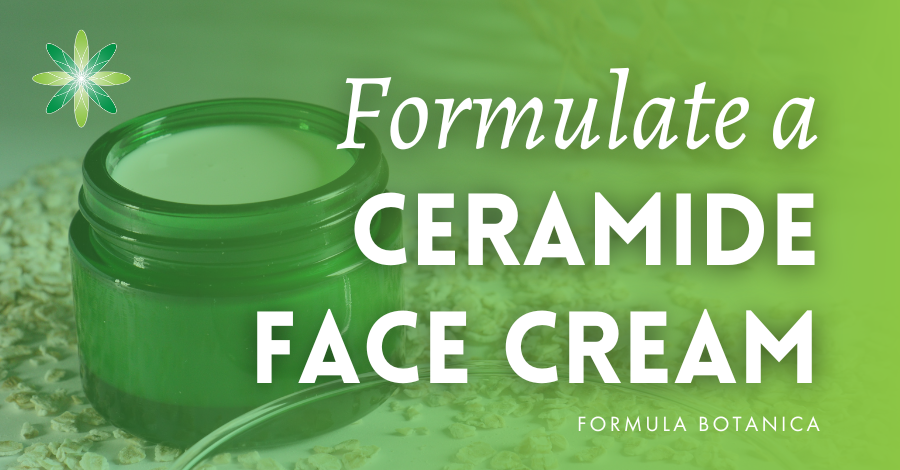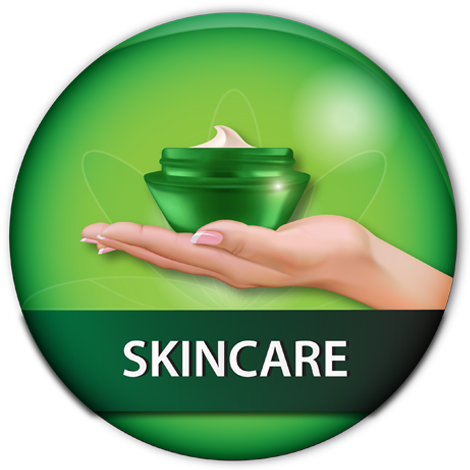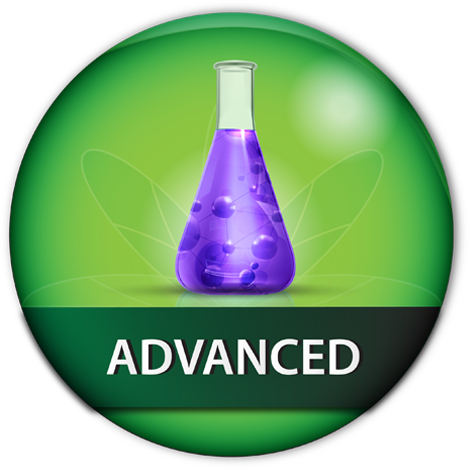If you’ve been looking for a gentle and nourishing natural cleanser, look no further.
Let me introduce you to one of my absolute favourite formulations: a 2-in-1 avocado cleansing milk & mask with avocado and tamanu oils — a very mild, multifunctional cleanser that feels incredibly luxurious on the skin, and will leave it clean, soft and very comfortable.
This formula is suitable for all skin types, but it’s especially good for dry and sensitive skin. You can even leave it on and use it as a nourishing face mask! My skin absolutely loves it.
I always keep the foundation ingredients stocked in my lab so I can whip up a batch whenever I need it. Sometimes I’ll tweak the actives or experiment with different botanical extracts, but the base formula and core ingredients always stay the same. Here’s how you can make it.
Formulation overview
This avocado cleansing milk & mask is a gentle, multifunctional 2-in-1 formula that both cleanses and nourishes your skin. Perfect for all skin types, it’s especially soothing and beneficial for dry and sensitive skin. It’s also my favourite formulation to make!
The key ingredients in this formula are cold-pressed tamanu and avocado oils, which give the cleanser its subtle, naturally grassy aroma and gorgeous colour. The fresh, vibrant scent of lemongrass essential oil perfectly complements the green theme of this formulation, adding a refreshing yet luxurious touch to the cleanser.
How to use this cleansing milk
You can either use this avocado cleansing milk as a daily cleanser (once or twice a day) or leave it on for 15–20 minutes as a nourishing mask. Either way, your skin will thank you!
Simply apply a small amount of milk on a slightly wet face using your hands and massage gently. Leave for 3-20 minutes and rinse off with warm water. Follow it up with your favourite toner/serum/moisturiser or any of your other preferred skincare products.
Need some suggestions? Check out these other free formulations:
How to make a witch hazel toner
How to make a rose hydrating facial serum
How to make a skin-loving green tea serum
How to formulate a restoring vitamin C face serum
How to make a high-performance vitamin E serum
How to formulate a prebiotic glycerine serum
How to make a pressed organic face serum
How to formulate a ceramide face cream
How to make a night cream with peptides
What makes this cleanser so special
What makes this cleanser special is that it’s an oil-in-water (O/W) emulsion, so it provides a gentle cleansing experience. With only 2% surfactants, it cleanses your skin very gently and respects your skin’s microbiome. You can learn more about the skin’s microbiome below:
The best part of this 2-in-1 cleanser is the way it feels. It leaves your skin feeling so nourished and comfortable that you don’t even need to use a moisturiser afterwards!
And you can use it all year round, especially during the cold, windy winter months.
Key ingredients
Below are the key ingredients I’ve used for this formula. I always keep these on hand so I can make the cleanser whenever I need more!
1. Avocado oil
INCI: Persea Gratissima (Avocado) Oil
Unrefined avocado oil is the heart of the formula, and also the source of its beautiful colour.
The oil is cold-pressed from the fresh pulp of the avocado and has a deep green hue, a thick, luxurious texture, and a subtle nutty aroma. It has excellent penetrative powers, which makes it especially beneficial for nourishing dry, mature, and damaged skin.
2. Tamanu oil
INCI: Calophyllum Inophyllum Seed Oil
Sourced from the nuts of the Tamanu tree (also known as the Alexandrian Laurel), unrefined tamanu oil is prized for its antibacterial, anti-inflammatory, and rejuvenating properties.
The oil has a strong, distinct aroma described as woody, spicy, nutty, and earthy. Despite its viscosity, it is easily absorbed and doesn’t leave any greasy residue or shine on the skin.
If you’d like to learn more about avocado and tamanu oils, check out this post:
3. Aloe vera extract
INCI: Aloe Barbadensis Leaf Extract
You’re probably already familiar with aloe vera, as it’s often used in formulations for its soothing effects. The extract is deeply moisturising, antibacterial, and anti-inflammatory: perfect for calming irritated or inflamed skin.
Aloe vera also supports skin regeneration after injuries, burns, or exposure to harsh conditions, while nourishing the skin and providing a gentle antiseptic effect. Learn more about aloe below:
4. Cucumber extract
INCI: Cucumis Sativus Seed Extract
Refreshing and hydrating, cucumber extract helps to calm the skin, reduce irritation, and improve overall skin tone.
Its cooling and soothing properties are especially beneficial for sensitive skin, while its gentle brightening effect helps promote a fresh, radiant complexion. Cucumber extract also supports skin regeneration, helping your skin look and feel revitalised.
5. Trehalose
INCI: Trehalose
A naturally occurring sugar found in resilient plants, trehalose helps protect plants against dehydration and environmental stress. In skincare, it can help strengthen the skin barrier function, reduce transepidermal water loss and reduce dryness.
As a bonus, it can also neutralise some unpleasant odours from cosmetic ingredients.
Want to learn more about the incredible properties of natural ingredients? Then check out our Ingredient Library, which is part of our Lab membership, our exclusive platform for formulators.
Additional ingredients
I’d also like to highlight two interesting ingredients in this formulation: gluconolactone and dermofeel® PA-3.
- Gluconolactone is a polyhydroxy acid (PHA) known for being gentler than alpha hydroxy acids (AHAs). Due to its larger molecular size, it doesn’t penetrate deeply into the skin, instead providing a mild exfoliating effect on the surface. It also functions as a humectant, is beneficial for dry skin, and serves as a very weak chelating agent.
- dermofeel® PA-3 is a well-known chelating agent, often used as a natural alternative to EDTA. It also acts synergistically with cosmetic antioxidants.
The combination of gluconolactone with dermofeel® PA-3 creates a buffer. As a result, if pH adjustment is needed, it can only be made using a NaOH solution; L-arginine will not be effective for raising the pH in this case.
Interested in diving deeper into cosmetic science? Then check out our Advanced Diploma in Organic Cosmetic Science to expand your scientific knowledge and formulation skills!
How to make an avocado cleansing milk & mask
- Formulation type: O/W emulsion, hot process
- Formulation level: Intermediate
- Batch size: 100g
| Phase | Ingredients | INCI | Weight (g) |
| A | Unrefined avocado oil | Persea Gratissima (Avocado) Oil | 20.00 |
| A | Montanov™ 68 | Cetearyl Alcohol (and) Ceteraryl Glucoside | 2.00 |
| A | Olivem® 1000 | Cetearyl Olivate (and) Sorbitan Olivate | 2.00 |
| A | Cetyl Alcohol | Cetyl Alcohol | 1.00 |
| B | Green tea hydrosol | Camellia Sinensis Leaf Water | 65.00 |
| B | Gluconolactone | Gluconolactone | 0.15 |
| B | Trehalose | Trehalose | 1.00 |
| B | Coco glucoside | Coco glucoside | 2.00 |
| C | Unrefined tamanu oil | Calophyllum Inophyllum Seed Oil | 3.00 |
| C | D-Panthenol | D-panthenol, Aqua | 1.00 |
| C | Tocopherol | Tocopherol | 0.50 |
| C | Rosemary CO2 extract | Rosmarinus Officinalis Leaf Extract | 0.20 |
| C | Aloe vera CO2 extract | Aloe Barbadensis Leaf Extract | 0.50 |
| C | Cucumber CO2 extract | Cucumis Sativus Seed Extract | 0.50 |
| C | Lemongrass essential oil | Cymbopogon Citratus Leaf Oil | 0.05 |
| C | dermofeel® PA-3 | Sodium Phytate (and) Aqua (and) Alcohol | 0.1 |
| C | Nipaguard® SCE | Sorbitan Caprylate (and) Propanediol (and) Benzoic Acid | 1.00 |
| Total: 100.00 |
Equipment:
- Personal protective equipment (PPE): Nitrile gloves, medical-grade face mask, disposable head cover and lab coat (or apron)
- Jewellery scales (0.01g precision)
- Glass beakers, glass pipettes/stainless steel spoons/stainless steel spatulas/silicone spatulas
- Water bath
- Thermometer (-50°С – +300°С)
- Misceo Homogeniser 250 P (rotor-stator)
- pH meter – I used the Horiba LAQUAtwin pH-22
- Distilled water to clean the pH meter
- Packaging: Airless pump bottle or glass jars
I washed the beakers, spoons, spatulas and containers with hot soapy water and sanitised them with 70% ethanol.
Formulation method:
Here’s how to make my avocado cleansing milk mask:
Step 1: Weigh your phase A ingredients (oil phase)
Start by weighing the avocado oil, Montanov™ 68, Olivem® 1000 and cetyl alcohol in a beaker.
Step 2: Weigh your phase B ingredients (water phase)
In another beaker, weigh the green tea hydrosol, gluconolactone, trehalose and coco glucoside, taring after each addition. Stir very gently, avoiding forming too many bubbles.
Coco glucoside is a nonionic surfactant which increases the pH, while gluconolactone reduces the pH, so it would be good to measure the pH of the water phase at this stage to make sure it is around 5-5.5. This will make it easier to correct the final pH later.
Step 3: Heat both phases to 75°C, add the oil phase to the water phase and homogenise
Next, heat both phases to 75°C. Then, slowly pour the oil phase into the water phase and stir gently to combine both phases. Now it’s time to mix under high shear. Use a homogeniser (I’ve used Misceo Homogeniser 250 P) and mix in short bursts for 1–2 minutes at speed 1.
Just be careful not to overblend or introduce air bubbles (which is easy to do when working with small batches).
Don’t worry if you can see a little foam forming on top of your hot emulsion. The bubbles will disappear when you start to mix gently by hand.
Tip: You can still make a small 100g batch using the Misceo 250 P. Just use a tall 150 ml beaker and fully submerge the rotor-stator in the emulsion.
Step 4: Mix the emulsion manually
Once the emulsion is homogenised, stop using a high shear and continue to mix manually. Place the emulsion in a pot of cold/ice water and stir gently. You will notice that all bubbles will disappear.
- Step 5: Add phase C to your emulsion
Once the emulsion is below 40°C, add all heat-sensitive ingredients (except for the preservative system Nipaguard® SCE) one by one, mixing well after each addition.
- Step 6: Measure and adjust the pH, then add the preservative
Check the pH of your emulsion and adjust if needed. Then add the preservative and measure the pH again. The working pH for Nipaguard® SCE is 4-8, but it’s best to adjust your pH to 5-5.5.
- Step 7: Package & label
For the final step, package your formulation and label it accordingly.
Formulation notes & tips:
This cleanser is very easy to formulate if you have some experience with O/W emulsions. Here are some tips that might help you:
- It’s better to add the surfactant to the water phase (coco glucoside) instead of the cool-down phase. If you add it to the cool-down phase, the pH of the emulsion will change significantly, the emulsion will become thinner, and it may destabilise the formula.
- It’s fine not to use a gum-glycerine blend in this formulation, as coco glucoside also acts as a thickener and increases the viscosity a bit. However, if you wish to further stabilise the product, you could add a gum, a butter, or a tiny amount of rice wax, for example.
- Make sure you select the right packaging for your product, as the final texture may vary depending on the chosen ingredients. In my case, I selected an airless pump bottle for hygienic/safety reasons and because the final texture of the emulsion is moderately viscous.
- As this formulation has a high amount of cold-pressed oils, it is essential to use antioxidants. I have used 2 in my formula to protect oils from going rancid too quickly: tocopherol and rosemary CO₂ extract. I’ve also added a chelator (dermofeel® PA-3) to protect my precious ingredients from oxidation.
Customising your cleanser
You can absolutely customise this formulation. This formula is a classic oil-in-water (O/W) emulsion with a small amount of surfactant, so it’s quite flexible. You could, for example:
- Swap the emulsifiers – Try other O/W emulsifiers if Montanov™ 68 or Olivem® 1000 aren’t available. I’ve found that a 50:50 ratio of Olivem® 1000 and Montanov™ 68 creates a very stable and luxurious texture.
- Change up the oils and botanical extracts – Experiment with oils you love or extracts tailored to your skin’s needs.
- Use a different broad-spectrum preservative – Choose one that’s effective and available in your region.
- Skip the essential oil – If, like me, your skin is very sensitive, or if you’re currently pregnant or breastfeeding, you can skip the lemongrass essential oil. You could use a hydrosol instead and/or a cold-pressed oil in the cool-down phase (like raspberry oil, which I love)
Final words
I hope you enjoy making this avocado cleansing milk, as it’s one of my all-time favourite formulations! I keep coming back to it, adapting the formula based on the ingredients I have on hand, and it never disappoints.
I’d love to hear how your version turns out! Share your experience in the comments below, or let me know what you’d like to see next.
New to emulsions? Formula Botanica’s free training course has got you covered. In this mini free course, you’ll learn the foundations of natural and organic skincare formulation and how to create your own products in no time.
FAQ
- Is this cleanser suitable for all skin types?
Yes, this cleanser is suitable for all skin types, especially dry, sensitive, and mature skin! It’s rich in nourishing oils and calming extracts that cleanse without stripping your skin’s natural barrier.
- Can I use this cleanser daily?
Absolutely! This formula is designed to be gentle enough for daily use. It works well as a morning and/or evening cleanser, and can also double as a nourishing mask
- Can I customise this formulation?
Definitely! This formulation is quite versatile. I always customise it with the ingredients I have on hand. Here are a few ways you can customise the cleanser: try another emulsifier, add different oils or extracts, use a different preservative, and use hydrosols instead of the lemongrass essential oil.
- Where can I learn how to formulate?
If you’re just getting started, I highly recommend Formula Botanica’s free online training. It’s an amazing introduction to natural cosmetic formulation. You’ll learn about ingredients, formulation techniques, safety, and more. Once you’re comfortable, you can explore our courses and create your own skincare products.
Suggested suppliers
I sourced all of my ingredients from Beurre, a Ukrainian supplier. However, if you’re based somewhere else, no worries! Here’s a list of recommended global suppliers:
INKY Ingredients (UK)
Aroma-Zone (EU)
Aromantic (UK)
Alexmo Cosmetics (EU)
Manske (EU)
The Soap Kitchen (UK)
Ellemental (EU)
Lotioncrafter (USA)
Essential Labs (USA)
Go Native NZ (New Zealand)
Naturally Balmy (UK)
O&3 – The Oil Family (UK/EU)
Soap & More (Canada)
Handymade (EU)
Formulator Sample Shop (USA)
FREE TRAINING
Learn how to become an
Organic Skincare Formulator
FREE TRAINING
How to become an
Organic Skincare Entrepreneur
FREE TRAINING
How to become an
Organic Skincare Entrepreneur
Leave us a comment
Viktoriia Slyvka is a Grading Tutor at Formula Botanica and a Formula Botanica graduate. She is a big fan of the distillation process and her favourite formulations are oil-in-water emulsions.


